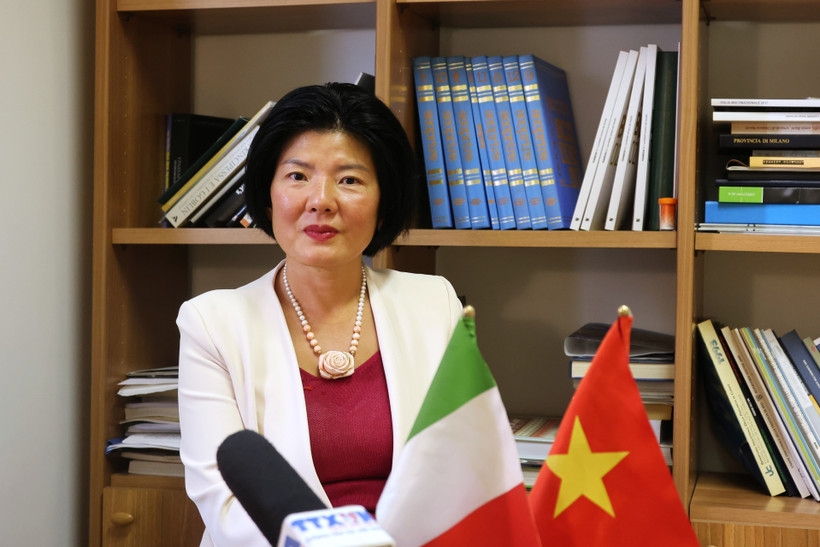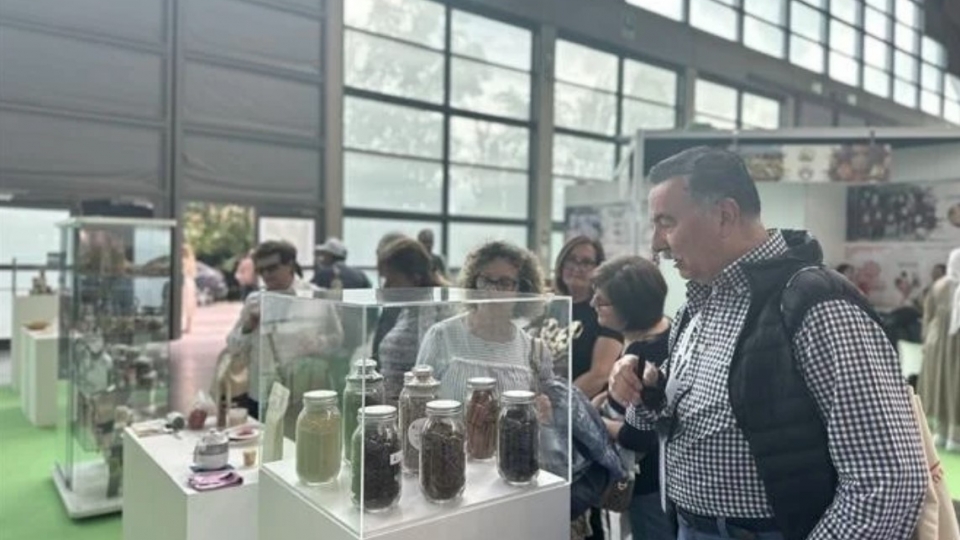EVFTA – a launchpad for Vietnam-Italy trade to soar
Over the past five years, the EU-Vietnam Free Trade Agreement (EVFTA) has served as a vital pillar in deepening economic and trade ties between Vietnam and Italy, said Duong Phuong Thao, Vietnamese Trade Counsellor in Italy.

Speaking to the Vietnam News Agency on the occasion of the 5th anniversary of the EVFTA coming into effect (August 1, 2020 - 2025), Thao noted that the agreement is a powerful catalyst for growth, helping both countries navigate global challenges such as the COVID-19 pandemic, geopolitical tensions, and inflation.
Despite global supply chain disruptions, bilateral trade between Vietnam and Italy surged by 49%, from US$4.62 billion in 2020 to US$6.91 billion in 2024. Vietnam’s exports rose by 58% to nearly US$4.94 billion. Key items with gigantic growth included iron and steel (up 9-fold), electronics and components (up 131.7%), footwear (up 88%), coffee (up 105%), machinery and equipment (up 97.5%), and vehicles and spare parts (up 82%).
Other products also saw strong growth such as textiles (up 42.3%), plastics (up 245%), seafood (up 2.2%), bags and hats (up 35.7%), iron and steel products (up 57.7%), handicrafts and carpets (up 76.3%), and pepper (up 304.1%). Only cashew nut exports saw a slight decline of 8.1%, totalling US$38.3 million.
On the import side, Vietnam purchased around US$1.97 billion worth of goods from Italy, up 30%, mainly machinery and premium products such as wine.
The EVFTA has brought significant tariff advantages, boosting Vietnam’s exports of agricultural and aquacultural products, textiles, and electronics, while facilitating the import of advanced technology and high-end goods from Italy. It has also strengthened Vietnam’s role in global supply chains and positioned it as a priority market for Italy’s international expansion, supported by credit guarantees and SME linkages.
In addition, the agreement has spurred institutional reforms in Vietnam, encouraged green production, and attracted Italian investment in technology and renewable energy.
Thao noted that it has unlocked major opportunities for Vietnamese exports to Italy, including iron and steel products, electronics, coffee, pepper, and footwear.
Imports from Italy focused on machinery to modernise Vietnam’s textile and food processing sectors. Luxury goods like wine and cheese grew in popularity thanks to rising middle-class demand and EVFTA tariff reductions. The renewable energy sector also saw positive movement, aligning with Vietnam’s sustainable development goals.
However, certain sectors have struggled to fully take advantage of the trade agreement with Europe. Vietnam’s seafood industry has been hampered by the “yellow card” imposed by the European Commission (EC) regarding illegal, unreported, and unregulated (IUU) fishing, which limits exports of shrimp and tra fish to Italy. High shipping costs and long delivery times have affected freshness and competitiveness. Strict EU food safety standards have posed a major challenge for small and medium-sized enterprises (SMEs). Textiles and footwear have also struggled due to reliance on Chinese materials, failing to meet the rules of origin. The lack of supporting industries and skilled labour has further restricted the ability to benefit from tariff preferences.
To overcome these hurdles, Thao emphasised the need for Vietnamese firms to comply with EU sanitary and phytosanitary regulations, invest in clean production, and improve traceability. Lifting the IUU yellow card is critical to maintain seafood tax benefits, she added.
Vietnam has undertaken major reforms to meet EVFTA commitments, notably the 2022 Intellectual Property Law, which boosts IP protection, encouraging Italian brand investment. The business environment has improved through administrative simplification and faster licensing, drawing more Italian financial institutions.
However, food safety standards and rules of origin remain key obstacles, especially for textiles and seafood. SMEs cannot meet green production and sustainable labour requirements.
To maximise EVFTA benefits, Thao recommended upgrading logistics by investing in seaport infrastructure and digitalising customs procedures.
The direct Hanoi-Milan flight route, launched on July 1, helps cut transport costs and time. Developing supporting industries through tax and credit incentives for domestic materials production is vital.
Italy’s strengths in agricultural machinery, precision engineering, and food processing could help modernise Vietnam’s industry. Collaboration with Italian designers will also add value to Vietnam’s garment and furniture products.
Thao expressed hope that the EVFTA would continue driving sustainable trade and investment. For Italy, cooperation in machinery, renewable energy, fashion, and technology will remain priorities.
Vietnam, in turn, must focus on tech transfer, especially in agricultural machinery and high-tech industries, and upgrade its supporting industries to reduce dependence on imports. Green production, renewable energy use, and human resources training are also essential.
She also warned that the EU’s push for FTAs with ASEAN peers like Thailand, Indonesia, and Malaysia may reduce Vietnam’s edge. If Thailand signs an FTA by 2026, similar tariff preferences could erode Vietnam’s competitiveness in agriculture and textiles. Moreover, rising Thai rice and fruit exports to Europe already pose direct competition to Vietnamese coffee and pepper.
Additionally, escalating US-China trade tensions and a 20% US reciprocal tariff on Vietnamese goods from August will further pressure Vietnam’s supply chains.
Thao emphasised that it is necessary to focus on product quality, sustainable production, and design innovation to maintain competitiveness and optimise the Vietnam-Italy strategic partnership.



